#saraswathi medical college
Text

Saraswathi Institute of Medical Sciences (SIMS Hapur 2021)
A prominent private medical institute established in 2008, Saraswathi Institute of Medical Sciences is located in Hapur, Uttar Pradesh. The institute, one of the best medical colleges in UP is known for medical training and research. Saraswathi medical college Hapur is affiliated with Ch. Charan Singh University, Meerut and has been approved by MCI. The institute has been MCI approved and has been given permission for over 150 seats.
sims hapur, sims courses, saraswati institute of medical sciences hapur mbbs fees,
#sims hapur#sims courses#medical sciences#medical institute#college medical#saraswathi medical college
0 notes
Text
Your Beloved..... Chapter- 1
in a dark cave tia dalma is chanting various language. there are so many vodo dolls hanging their. she is doing black magic.
tia dalma: yess.....yessss....i will succeed...i will never let those people in peace...they caged me...they insulted me...i will not sphere them...I will not sphere that sparrow. I will not spare that British man......nooo...
she again chant some magical words and give davy jones life. she is give him the souls of all the dead person of sea as energy. she is about to give the last soul but before she could fitch that soul it escaped and broke all her glass jars and bottles.
tia dalma: NO....HE COULDN'T BE ALIVE...I WANT HIS SOUL TO DISTROY THAT WILL TURNAER AND ELIZABETH..I WANT HIS SOUL TO DISTROY SPARROW...HE HAS ONLY HATE FOR THEM...HE HAS NO KINDNESS IN HIS HEART...THIS SOUL IS MORE POWERFULL THAN OTHERS...I WANT HIM...I WANT HIM....
in Kolkata medical college,
the students are very busy they are chatting about various things. after the lockdown the educational institutes are now open. the vaccinations are almost done. some students are preparing for Saraswathi puja. they are almost done. suddenly a random student..
"hey...where is flowers? without flower how can we do puja (worship)?"
"oh hello..Soudamini already collect the flowers and made garland."
but where is she? another boy asked.
she is getting ready.. Another one replied.
"give her some time......she is so responsible girl....."
"Her smile is naughty,
Her eyes are innocent,
Her purity is like flower,
Her is fearlessness is like A Goddess. "
Then the most awaited girl is arrived while blowing Shankh.
[For watching pictures plz visit wattpad and read the original story. The link had given bellow]
#cutler beckett#Cutler becket X Oc#tomholander#fanfic#pirates of the caribbean#tumblr blaze#potc#lord cutler beckett#cutler beckett x fem reader
3 notes
·
View notes
Text
References
Ayers, Susan, Daniel B. Wright, and Alexandra Thornton. 2018. “Development of a measure of postpartum PTSD: The city birth trauma scale.” Frontiers in Psychiatry 9. Retrieved July 24, 2023 (https://doi.org/10.3389/fpsyt.2018.00409).
Benyamini, Yael, Maya L. Molcho, Uzi Dan, Miri Gozlan, and Heidi Preis. 2017. “Women’s attitudes towards the medicalization of childbirth and their associations with planned and actual modes of birth.” Women and Birth: Journal of the Australian College of Midwives 30(5). Retrieved August 6, 2023 (https://doi.org/10.1016/j.wombi.2017.03.007).
Campero, Lourdes, Cecilia García, Carmen Díaz, Olivia Ortiz, Sofía Reynoso, and Ana Langer. 1998. “'Alone, I wouldn't have known what to do': A qualitative study on social support during labor and delivery in Mexico.” Social Science & Medicine 47(3). Retrieved August 1, 2023 (https://doi.org/10.1016/S0277-9536(98)00077-X).
Cohen Shabot, Sara. 2021. “‘You are Not Qualified—Leave it to us’: Obstetric Violence as Testimonial Injustice.” Human Studies 44(4). Retrieved July 19, 2023 (https://doi.org/10.1007/s10746-021-09596-1).
Diaz-Tello, Farah J. D. 2016. “Invisible wounds: obstetric violence in the United States.” Reproductive Health Matters24(47). Retrieved July 13, 2023 (https://doi.org/10.1016/j.rhm.2016.04.004).
Jardim, Danúbia M. B. and Celina M. Modena. 2018. “Obstetric violence in the daily routine of care and its characteristics.” Revista Latino-Americana de Enfermagem 26. Retrieved July 9, 2023 (https://doi.org/10.1590/1518-8345.2450.3069).
Logan, Rachel G., Monica R. McLemore, Zoe Julian, Kathrin Stoll, Nisha Malhotra, and Saraswathi Vedam. 2022. “Coercion and non‐consent during birth and newborn care in the United States.” Birth (Berkeley, Calif.) 49(4). Retrieved July 13, 2023 (https://doi.org/10.1111/birt.12641).
Lokugamage, A. U. and S. D. C. Pathberiya. 2017. “Human rights in childbirth, narratives and restorative justice: a review.” Reproductive Health 14(1). Retrieved August 5, 2023 (https://doi.org/10.1186/s12978-016-0264-3).
Martinez-Vázquez, Sergio, Julián Rodríguez-Almagro, Antonio Hernández-Martínez, and Juan Miguel Martínez-Galiano. 2021. “Factors associated with postpartum post-traumatic stress disorder (Ptsd) following obstetric violence: A cross-sectional study.” Journal of Personalized Medicine 11(5). Retrieved July 24, 2023 (https://doi.org/10.3390/jpm11050338).
Plummer, Marilyn and Lynne E. Young. 2010. “Grounded Theory and Feminist Inquiry: Revitalizing Links to the Past.” Western Journal of Nursing Research 32(3). Retrieved September 28, 2023 (https://doi.org/10.1177/0193945909351298).
Sadler, Michelle, Mário J. Santos, Dolores Ruiz-Berdún, Gonzalo L. Rojas, Elena Skoko, Patricia Gillen, and Jette A. Clausen. 2016. “Moving beyond disrespect and abuse: addressing the structural dimensions of obstetric violence.” Reproductive Health Matters 24(47). Retrieved August 5, 2023 (https://doi.org/10.1016/j.rhm.2016.04.002).
1 note
·
View note
Text
TOP MEDICAL COLLEGE IN MBBS IN INDIA

Medical college in mbbs in India has numerous medical colleges that offer undergraduate and postgraduate courses in medicine and allied fields. As of my last knowledge update in January 2024, here are some notable medical colleges in India.
Introduction
India boasts a rich tapestry of medical institutions that have carved a niche for themselves in the field of education, research, and healthcare. For aspiring medical professionals, choosing the right institution can be a pivotal decision that shapes their future. In this article, we delve into the top medical colleges offering MBBS programs in India, examining their academic excellence, infrastructure, research contributions, and overall standing in the medical education landscape.
1.The Hamdard Institute of Medical Sciences Delhi MBBS
A prestigious institute founded in 2012 is the Hamdard Institute of Medical Sciences and Research in New Delhi. It's situated in Delhi. The institute provides one undergraduate course and fifteen graduate courses. There is a Full Time option available for these courses. An esteemed university offering MBBS, MD, and Master of Surgery programs is the Hamdard Institute of Medical Sciences and Research in New Delhi. The instructors teaching these courses have a wealth of experience. A candidate with a background in medicine and health sciences can pursue a variety of courses, including MBBS, MD, and Master of Surgery. You have been offered the opportunity to acquire knowledge in the areas of community medicine, anatomy, pathology, general medicine, orthopaedics, ophthalmology, general surgery, microbiology, and more by the qualified and experienced professors at the Hamdard Institute of Medical Sciences and Research, New Delhi.
2.Rama Medical College, Kanpur
On May 5, 2024, Rama Medical College will hold the NEET UG 2024 exam for admission to the MBBS program. On March 3, 2024, Rama Medical College will hold the NEET PG 2024 exam for admission to the MD and MS programs .Founded in 2008, Rama Medical College, Kanpur is a private medical school situated in Kanpur. The Medical Council of India has granted recognition to Rama Medical College Kanpur. It is connected to. Rama Medical College Kanpur provides undergraduate programs in B.Sc. and MBBS. MD and MS at the postgraduate level in a range of specialisations. The university also offers PhD programs in a range of paramedical and medical fields. The results of the admission exams determine who gets to enrol in each course.
3.Saraswathi Institute of Medical Sciences, Hapur
Saraswathi Ammal Educational and Charitable Trust” (SAECT), Chennai, Under the direction and leadership of Dr. J. Ramachandran, the Institute's Chairman, Saraswathi Ammal Educational and Charitable Trust" (SAECT), Chennai, established the Saraswathi Institute of Medical Sciences in Hapur in 2008 with the goal of turning it into a preeminent medical teaching institution and a centre of excellence for offering the community the best and most reasonably priced medical care.
As the President of the nation's first marine university, Academy of Maritime Education and Training University, Chennai (AMET University), Dr. J. Ramachandran is a well-known educationist and socialite from Tamilnadu State.
4.National Capital Region Institute of Medical Sciences Meerut
The National Capital Region Institute of Medical Sciences, Meerut is located on the Meerut-Hapur Road, which is National Highway (NH) 235. The distances are as follows: 444 km from Lucknow, the state capital; 70 km from Delhi, the national capital; and 21 km from Meerut City. It has excellent rail and road connections.
Dr. Om Prakash, the college chairman, is a renowned and award-winning physician.
The campus, which covers 20 acres, is lush and verdant. The distance from Hapur Junction Railway Station is around 11 km, from Meerut City Junction Railway Station it is 21 km, and from Sohrab Gate Bus Stand, Garh Road Meerut, it is only 18 km. It has excellent public transportation connections to both cities.
.
5.F.H. Medical College and Hospital, Agra
A renowned institution of higher learning, F.H. Medical College and Hospital has its roots in Agra, Uttar Pradesh since 2014. Institute offers 16 courses which are Degree in Full Time mode. Overall, the Institute has diversified 1 UG course. Institute enjoys a good reputation for courses like MD, MS, MBBS in the streams of Medicine & Health Sciences Students can opt courses from these. Over the period, F.H. Medical College and Hospital has gained expertize through its trained and experienced faculty in the fields of Pediatrics, Dermatology, Ophthalmology, Psychiatry, General Medicine, General Surgery, Anaesthesia, Orthopaedics, Pathology, Pulmonary Medicine, Community Medicine, Obstetrics & Gynecology. Courses offered by the institute are recognized by a reputed approving body like NMC. Institute has a capacity of taking 192 students overall under all courses. Institute has a well supported campus with facilities like Auditorium, Boys Hostel, Cafeteria, Girls Hostel, Gym, Hospital / Medical Facilities, Hostel, Labs, Library, Sports Complex, Wi-Fi Campus.
0 notes
Text
Exploring the Depths of Knowledge: A Comprehensive Guide to Pursuing a PhD in Ayurveda

In PhD in Ayurveda, tradition and traditional medicine are studied for therapeutic and treatment purposes. Because Ayurveda medications have few to no adverse effects, research in this area will contribute to bringing Ayurveda's core principles back to life. In this field, the highest degree possible is a PhD in Ayurveda. The course offers a thorough understanding of Ayurveda and its applications.
The duration of this doctorate-level programme is three to five years, and depending on the type of institute, the average fees range from INR 15,000 to INR 3.5 LPA.
One of the fundamental tasks that a student must do is to prepare a thesis that summarises their observations from the creation of Ayurveda medicine to its effects on the human body.
What is the admission process for PhD in Ayurveda?
In most universities or institutions, admission to PhD programmes in Ayurveda is determined by the results of entrance tests. Candidates must meet the minimal requirements for admission to the specified college in order to sit for the entrance exam.
Every university prioritises academic excellence and knowledge at the research level above all else.
Candidates are directly admitted to institutions that provide merit-based admissions based on how well they performed on their most recent qualifying exams.
In order to get admitted to institutions that provide entry-based admissions, candidates must take the entrance exam. Every college requires a personal interview at the time of admission. The institutes also exclude candidates who pass national level admission exams like UGC-NET from taking written exams.
What is the eligibility criteria?
The following are the specific requirements for admission to the PhD programme in Ayurveda:
Applicants must hold a current Master's degree in the relevant field from an accredited university.
Candidates may also apply if they hold an MPhil degree.
Additionally, candidates need to have earned a master's degree with a minimum cumulative GPA of 55%.
Certain educational institutions additionally grant a 5% mark relaxation to candidates belonging to the reserved categories, such as SC, ST, and PWD.
In order to pursue a doctorate degree, candidates must first clear any outstanding post-graduate research papers.
Where can one pursue PhD in Ayurveda?
The institutes from where one can pursue PhD in Ayurveda are:
Banaras Hindu University, Varanasi
Tilak Maharashtra Vidyapeeth, Pune
Rajiv Gandhi University of Health Sciences, Bangalore
Gujarat Ayurved University, Jamnagar
Himalayan University, Itanagar
KLE University, Belgaum
Tantia University, Ganganagar
Sri Chandrasekharendra Saraswathi Viswa Mahavidyalaya, Kanchipuram
PhD Syllabus
PhD in Ayurveda Syllabus Semester I
Research Methodology and Biostatistics
Research Ethics, Scientific Writing and Communication
Essentials of Computer Applications, Literature and Data Search
PhD in Ayurveda Syllabus Semester II
Review of Literature and Presentation of a Seminar on a Research Theme related Topic
Current Methods, Tools and Techniques in Swasthavritta & Yoga Research
PhD in Ayurveda Syllabus Semester III
Preparation and Presentation of the Research Plan Proposal
Essentials of Preventive Health Care in Ayurveda
Role of Diet and Dietetics in Preventive Health Care
PhD in Ayurveda Syllabus Semester IV
Review of related research from Ancient period, Medieval period
Aim of Research plan proposal introduction of methodology
PhD in Ayurveda Syllabus Semester – V
Recent Trends in Research related to Preventive Health Care in Ayurveda
Recent Trends in Research related to Yoga
PhD in Ayurveda Syllabus Semester – VI
Ancient method of Standardisation and it's collaboration with modern methods.
What are the career options after completing PhD in Ayurveda?
A doctorate in Ayurveda opens up a world of fascinating professional options that blend conventional wisdom with contemporary science. Graduates' contributions can have a major impact on people's well-being, healthcare systems, and society at large, regardless of whether they decide to pursue careers in research, education, practice, consulting, or advocacy.
Academic Research/Teaching: Academics are among the most sought-after career paths for PhD holders. Graduates, with their deep understanding and research skills, can advance Ayurvedic science through groundbreaking research, publication in scholarly journals, and mentoring of the next generation of academics.
As professors, they have the ability to shape the future of Ayurvedic medicine by instructing aspiring practitioners.
Advisor and Consultant: PhD graduates can work as Ayurvedic consultants or advisers, interacting with hospitals, spas, wellness centres, or even businesses to integrate Ayurvedic concepts into their products. By offering guidance on preventative measures, diet, and lifestyle choices, they can promote the health of a range of people.
Clinical Practitioner: Doctorates in Ayurveda with a focus on wellness may establish a clinical practice offering personalised medical care and wellness initiatives based on age-old Ayurvedic principles. Their extensive experience enables them to diagnose complex illnesses and develop personalised treatment plans for patients seeking natural and alternative medicines, all while providing holistic care.
R&D in the Herbal and Pharmaceutical Industries: The Herbal and Pharmaceutical industries are increasingly appreciating the importance of Ayurvedic expertise. Doctorate holders can work in research and development roles to create new herbal treatments, conduct quality control testing, and ensure the safety and effectiveness of products made from Ayurveda.
Medical Tourism Facilitator: The number of Ayurvedic medical tourists is increasing along with the popularity of complementary and alternative therapies. Doctorate holders can act as intermediaries, helping individuals from all over the world access authentic Ayurvedic treatments and experiences in Indian Ayurvedic centres or in their home nations.
Writing about Health and Wellness: Because of their extensive expertise, PhD holders are able to write about health and wellness for books, blogs, and journals. They are able to dispel myths, educate the public on the benefits of Ayurveda, and provide valuable advice on incorporating Ayurvedic practices into everyday life.
Public Health and Policy Advocacy: PhD graduates can assist with public health initiatives by advocating for the integration of Ayurvedic treatments into traditional healthcare systems. They can work with those in charge to advance Ayurveda.
Yoga and Meditation Instructor: Integrating Ayurveda with yoga and meditation is a useful strategy for achieving holistic health. Graduates can pursue teacher training programmes in yoga and meditation, offering classes that combine traditional wisdom with modern methods.
Creating new products and business: Doctorates with an entrepreneurial spirit can launch their own Ayurvedic product brands, encompassing skincare products, herbal supplements, and health bundles. Their thorough knowledge of Ayurvedic formulas and principles will provide them a competitive advantage in the market.
Conclusion
Ayurveda is fast gaining popularity among the people. And having a PhD In this field is very rewarding.
0 notes
Text
References
Ayers, Susan, Daniel B. Wright, and Alexandra Thornton. 2018. “Development of a measure of postpartum PTSD: The city birth trauma scale.” Frontiers in Psychiatry 9. Retrieved July 24, 2023 (https://doi.org/10.3389/fpsyt.2018.00409).
Benyamini, Yael, Maya L. Molcho, Uzi Dan, Miri Gozlan, and Heidi Preis. 2017. “Women’s attitudes towards the medicalization of childbirth and their associations with planned and actual modes of birth.” Women and Birth: Journal of the Australian College of Midwives 30(5). Retrieved August 6, 2023 (https://doi.org/10.1016/j.wombi.2017.03.007).
Campero, Lourdes, Cecilia García, Carmen Díaz, Olivia Ortiz, Sofía Reynoso, and Ana Langer. 1998. “'Alone, I wouldn't have known what to do': A qualitative study on social support during labor and delivery in Mexico.” Social Science & Medicine 47(3). Retrieved August 1, 2023 (https://doi.org/10.1016/S0277-9536(98)00077-X).
Cohen Shabot, Sara. 2021. “‘You are Not Qualified—Leave it to us’: Obstetric Violence as Testimonial Injustice.” Human Studies 44(4). Retrieved July 19, 2023 (https://doi.org/10.1007/s10746-021-09596-1).
Diaz-Tello, Farah J. D. 2016. “Invisible wounds: obstetric violence in the United States.” Reproductive Health Matters 24(47). Retrieved July 13, 2023 (https://doi.org/10.1016/j.rhm.2016.04.004).
Jardim, Danúbia M. B. and Celina M. Modena. 2018. “Obstetric violence in the daily routine of care and its characteristics.” Revista Latino-Americana de Enfermagem 26. Retrieved July 9, 2023 (https://doi.org/10.1590/1518-8345.2450.3069).
Logan, Rachel G., Monica R. McLemore, Zoe Julian, Kathrin Stoll, Nisha Malhotra, and Saraswathi Vedam. 2022. “Coercion and non‐consent during birth and newborn care in the United States.” Birth (Berkeley, Calif.) 49(4). Retrieved July 13, 2023 (https://doi.org/10.1111/birt.12641).
Lokugamage, A. U. and S. D. C. Pathberiya. 2017. “Human rights in childbirth, narratives and restorative justice: a review.” Reproductive Health 14(1). Retrieved August 5, 2023 (https://doi.org/10.1186/s12978-016-0264-3).
Martinez-Vázquez, Sergio, Julián Rodríguez-Almagro, Antonio Hernández-Martínez, and Juan Miguel Martínez-Galiano. 2021. “Factors associated with postpartum post-traumatic stress disorder (Ptsd) following obstetric violence: A cross-sectional study.” Journal of Personalized Medicine 11(5). Retrieved July 24, 2023 (https://doi.org/10.3390/jpm11050338).
Sadler, Michelle, Mário J. Santos, Dolores Ruiz-Berdún, Gonzalo L. Rojas, Elena Skoko, Patricia Gillen, and Jette A. Clausen. 2016. “Moving beyond disrespect and abuse: addressing the structural dimensions of obstetric violence.” Reproductive Health Matters 24(47). Retrieved August 5, 2023 (https://doi.org/10.1016/j.rhm.2016.04.002).
1 note
·
View note
Text
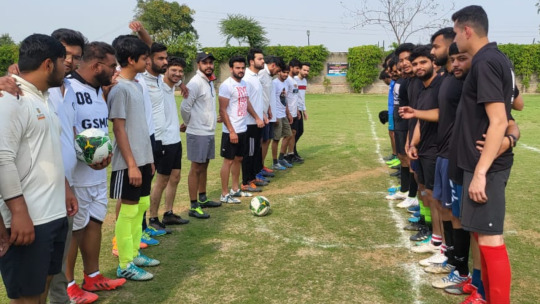
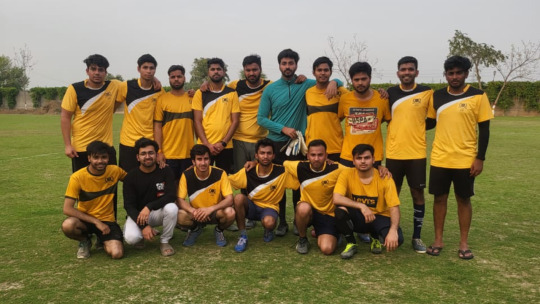
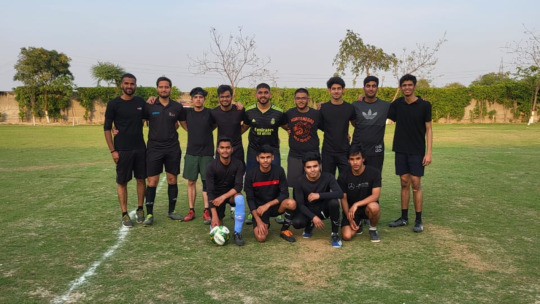

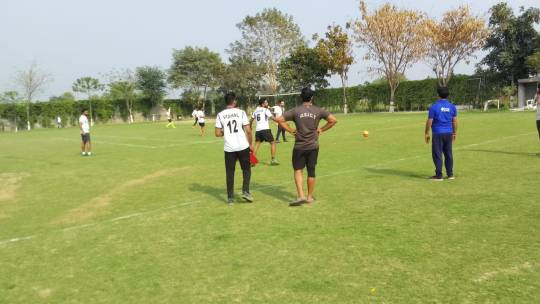
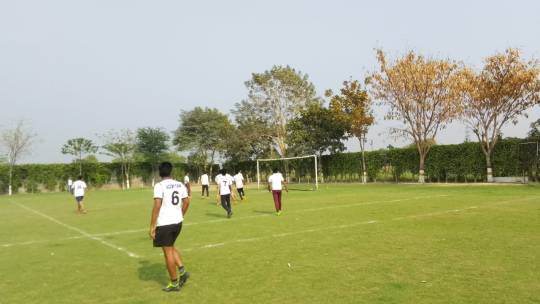
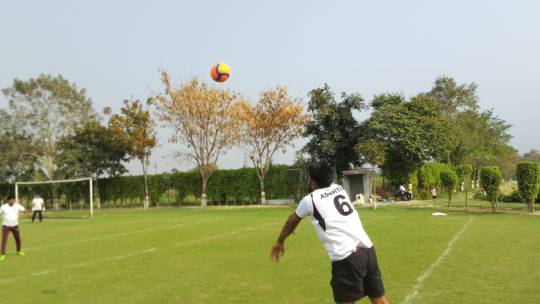
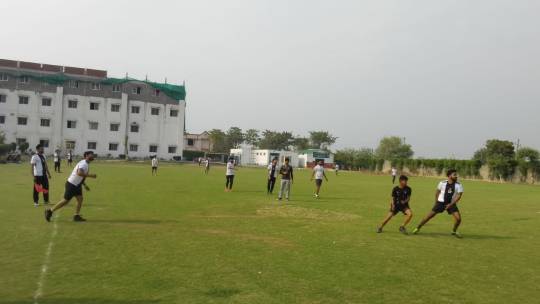

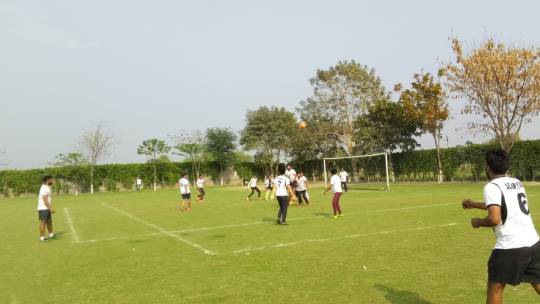

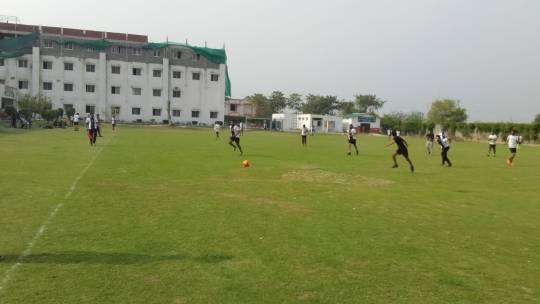
GS Inter-College Tournament - Some Glimpses of Football Match
Five Teams are Participated -
GS Medical College & Hospital Team
Rama medical College football Team
Muzaffarnagar Medical College Football Team
NCR medical College Football Team, Meerut
Saraswathi Medical College Football Team
#Football #Match #GSGroup #GSMedicalCollege #GSAyurveda #GSNursing #GSHospital #DelhiNcr #UttarPradesh #India
0 notes
Text
Which state is best for BAMS study?
Ayurveda, a traditional system of medicine, is becoming increasingly popular both in India and abroad. Bachelor of Ayurvedic Medicine and Surgery (BAMS) is a five-and-a-half-year undergraduate course that teaches students about Ayurvedic principles and treatments.
Many states in India have established BAMS colleges, It is hard to choose which state is better for BAMS study in India. It may vary from individual to individual depends on their choices.
Maharashtra has several reputed BAMS colleges, including Mahatma Gandhi Ayurvedic College Hospital & Research, Wardha, Ayurved Mahavidyalaya, Mumbai, and R.A. Podar Ayurved Medical College, Mumbai. The state has a strong healthcare system and a large number of Ayurvedic hospitals, which provide students with ample opportunities to grow their medical career.
Kerala is known for its rich tradition in Ayurveda and is home to several reputed BAMS colleges. The state has a number of Ayurvedic hospitals and research centers, which provide students with ample opportunities to gain practical experience. Kerala also has a warm and humid climate, which is believed to be beneficial for Ayurvedic treatments.
Karnataka is another state that is known for its strong tradition in Ayurveda. The state has several reputed BAMS colleges, including SDM College of Ayurveda, Udupi, and Alvas Ayurvedic Medical College, Moodbidri. The state also has several Ayurvedic research centers and hospitals, which provide students with opportunities to gain practical experience.
Rajasthan has a number of reputed BAMS colleges, including National Institute of Ayurveda, Jaipur, and Ayurveda College, Jodhpur. The state has a rich tradition in Ayurveda and a large number of Ayurvedic hospitals and research centers.
Tamil Nadu is known for its Siddha system of medicine, which is similar to Ayurveda. The state has several reputed BAMS colleges, including Government Siddha Medical College, Chennai, and Sri Jayendra Saraswathi Ayurveda College, Nazareth. The state is known for its ancient impact of ayurveda, results into rich culture of ayurvedic medicines.
Gujarat has several reputed BAMS colleges, including Institute of Ayurvedic Pharmaceutical Sciences, Anand, and Shree O.H. Nazar Ayurved College, Surat.
Uttar Pradesh has several reputed BAMS colleges, including Rajkiya Ayurvedic College, Varanasi, and Bundelkhand Government Ayurved College, Jhansi.
Student can choose the state depends upon their individual choice and priority. Choosing your native state is good from financial point of view. But, if you want to explore more then you can go for other state universities as well.
Hope this will help you.
#best institute of ayurvedic in maharashtra#top ayurvedic college in maharashtra#ayurvedic college maharashtra#bams college in maharashtra#top bams ayurvedic colleges maharashtra
0 notes
Text
Come and Explore the Best college of Uttar Pradesh with Mbbswala
So here's Saraswathi Institute of Medical Sciences
For more visit our website :
https://mbbswala.in/saraswati-institute-of-medical-sciences-sims-hapur/
Our Toll-free no. : 18003095832
:
:
:
#mbbswala #Bhopal #madhyapradesh #aspirants #doctor #doc #neetcounselling
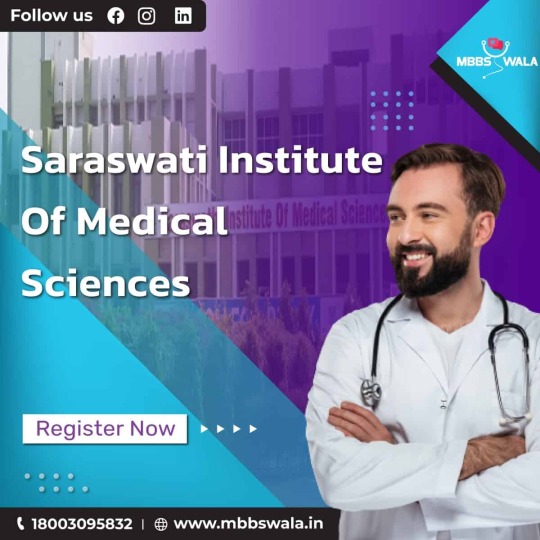
0 notes
Text
Saraswathi Institute of Medical Sciences, a well-known private medical facility founded in 2008, is situated in Hapur, Uttar Pradesh. The institution, one of the top medical schools in Uttar Pradesh, is renowned for its research and training in medicine. With MCI approval, Ch. Charan Singh University in Meerut is associated with Saraswathi Medical College Hapur. The MCI has approved the institute and granted authorization for more than 150 seats.
The best faculty in all fields may be found at the Institute of Medical Sciences. Faculty members engage in a variety of research projects in addition to teaching, and some have even presented their research at conferences.
The medical institute has partnered with a number of hospitals that have top-notch amenities to provide high-quality healthcare at a reasonable cost. The hospital offers OPD and IPD services with round-the-clock trauma and accident care. Modern diagnostic and treatment facilities include MRI, mammography, DSA, Echo, and endoscopy.
Instant Highlights
Type
Private
Established
2008
Accredited
MCI
Ranking
Good
Courses
The five-year MBBS programme at SIMS hapur includes a one-year internship. Several students are currently enrolled in a variety of UG, PG, and diploma courses. Each year, SIMS offers a number of new courses. The private institution in Uttar Pradesh offers MBBS as one of its UG programmes, and its PG programmes offer specialisation in the growth of theoretical knowledge, practical and clinical abilities, and training in methodology as well as pharmacy and nursing separately.
Anatomy, biochemistry, microbiology, forensic and community medicine, general medicine, obstetrics & gynaecology, paediatrics, psychiatry, and many more topics are covered in the MBBS curricula.
Fee schedule for Saraswati Medical College Hapur
The MBBS tuition at Saraswati Institute of Medical Sciences Hapur is very reasonable.
Student fees
Hotel Charges (Ac)
Hostel Fee for Non-AC
Security deposits
Other Fees
11,05000
175000
150000
30,0000
80,000
eligibility requirements
The eligibility requirements for the Saraswathi Institute of Medical Sciences include:
UG: The probable students must have earned a 50% on their 10+2 exam from a state board that is acknowledged in PCB.
Potential applicants must hold an MBBS from an accredited medical school and have successfully completed the internship.
Application Procedure
The UP Medical College's admission process is straightforward and hassle-free. The candidate should have successfully finished their 10+2 in PCB with English as the primary subject from a reputable board or university. For admission, general category students must have a 50% average, while SC/ST students must have a 40% average. Admission requires the NEET entrance test with a 50% passing rate.
Documents Necessary
Students must submit specific paperwork while applying to one of the top private colleges in Uttar Pradesh, which includes:
10+2 grade report
Birth Registration
the ID.
passport-sized images
Cut off
One of Uttar Pradesh's premier medical schools, Saraswathi Institute of Medical Sciences, is located in the Hapur District. It started in 2008 with 100 seats thanks to MCI's approval. It was granted approval for 150 seats in 2017. There are currently 120 interns working on campus, and approximately 600 students are studying MBBS.
Reputation and Ranking
The best facilities and reputation for medical education and research can be found at SIMS hapur, one of the top private medical colleges in Uttar Pradesh. As students from all over the world travel to UP to pursue their MBBS degrees, the medical college there has a solid ranking.
Reputation and Ranking
Good
Education
Good
Faculty
Good
Infrastructure
Excellent
Placements
Since the institute is affiliated with multiple hospitals that have cutting-edge equipment and amenities to provide the best, reasonably priced medical treatment, it offers 100 placements. The hospital offers OPD and IPD amenities for all clinical disciplines. It provides accident and trauma care round-the-clock. The facility features a number of operating rooms, a cutting-edge labour room, and nursery wards. The best therapeutic and monitoring equipment, including ventilators, infusion pumps, phototherapy and radiant heater units, defibrillators, central gas and suction facilities, is found in intensive care units (ICUs).
SIMS Hapur Campus Life
The campus of SIMS Hapur, the premier medical school in UP, is situated near the village of Anwarpur in the district of Hapur. The school is spread out across a sizable amount of land and offers a clean, healthy environment. the administration building for the hospital, staff housing, and dorms for boys and girls.
Accommodation
One of the best private medical schools in India offers students first-rate housing and round-the-clock security.
Hostels
The spacious dorm rooms are provided on a twin-sharing basis and have adjoining toilets. Every room includes a bed, a desk, a chair, a bookcase, and storage space. The hostel has a dining area, a common area, and other fundamental indoor amenities. Boys' and girls' hostels are offered separately.
Mess
Both vegetarian and non-vegetarian wholesome Indian food is provided to students. The hostel has installed RO plants that provide clean drinking water. The hostel makes sure that students receive wholesome cuisine.
The Best Medical College Student Life
The top medical college offers its students cutting-edge facilities and top-notch instruction. Students receive the best instruction and infrastructure, as well as recreational opportunities including
Among the indoor games are chess, table tennis, and carom.
Gym
The indoor games include football and cricket, which may be played on the large playground.
The greatest private medical college in India offers students a variety of academic or cultural programmes year-round in addition to entertaining ones.
Benefits of Saraswathi Institute of Medical Sciences
MCI-certified institution
placements at 100%
Modern teaching techniques
gives students a platform to receive training in a variety of medical specialties
1 note
·
View note
Text

Time to travel abroad for study.
One of the most trusted and leading educational companies in India is Get Admission Info
𝐂𝐚𝐥𝐥 𝐔𝐬 𝐍𝐨𝐰: +91- 9540237575
helps students get into top colleges and universities in both India & Abroad.
𝐎𝐮𝐫 𝐒𝐞𝐫𝐯𝐢𝐜𝐞𝐬:
MBBS Abroad
study India
Study Abroad
𝐓𝐡𝐢𝐬 𝐢𝐬 𝐰𝐡𝐚𝐭 𝐰𝐞 𝐝𝐨:
Genuine Counselling
Your Knowledge Bank
Admission & Visa Assistance
Colleges Names
fh medical college,
rajshree medical research institute bareilly,
hind institute of medical sciences barabanki,
Kanti Devi Medical College,
saraswathi institute of medical sciences,
Shri Ram Murti Smarak Institute of Medical College,
GS Medical College Hospital Hapur,
Subharti Medical College,
#mbbsabroad#lucknow#mbbs#mbbsstudent#seminar#seminars#roorkee#medicalstudent#mbbsdiaries#dehradun#mbbsinrussia#neetug#educationexpo#studyabroad#studyabroadconsultants#affinityeducationconsultants#affinityeducationgroup#affinityeducationapp#affinityeducation#kashipur#affinityeducationpvtltd#mbbsinphilippines#affinityeducationseminars#noida#mbbsinabroad#kanpur#gorakhpur
0 notes
Text
Saraswathi Institute of Medical Sciences Hapur Fees, and Admission

Saraswathi Institute of Medical Sciences Hapur is one of the leading colleges located in Hapur Pradesh. At SarvJanakari you will get point by point data of SIMS Hapur fees structure, courses offered, ranking, neet cut off, and complete college review.
Visit at https://sarvjanakari.com/saraswathi-institute-of-medical-sciences-hapur/
1 note
·
View note
Text
Prevalence and Predictors of Influenza Vaccination Among Adults with High-Risk Conditions, United States, 2019
Prevalence and Predictors of Influenza Vaccination Among Adults with High-Risk Conditions, United States, 2019
Saji Saraswathy Gopalan1*, Devi Kalyan Mishra2, Ashis Kumar Das31Human Development Department, The World Bank, Washington DC, USA2Department of Community Medicine, Hitech Medical College, Rourkela, India3Research Group, The World Bank, Washington DC, USA
Corresponding Author: Saji Saraswathy Gopalan, PhD, DrPH ORCID iDAddress: The World Bank, 1818 H St NW, Washington DC, USA.Received date: 3…
View On WordPress
0 notes
Link
Vatika Group has dispatched Vatika Deen Dayal Plots In Sector 88A & 88B, the developing IT place point of India in NCR. The city has seen the headway of different endeavors and is assigned as perhaps the most emerging private place point in India.
Vatika plots sector 88B Gurgaon is potentially the most promising realty project in Vatika plots Gurgaon which will give you a stunning benefit from your theory.
Right when you are taking care of your merited money, you should post for detection that is viably and extraordinarily related by roads, gets ready, and planes with the rest of the world. Pataudi road partners Vatika Express City Plots Sector 88B Gurgaon Haryana with the Vatika plots on dwarka expressway connectivity. This highway interfaces the spot with the rest of the Haryana and different bits of the country as well.
The Indira Gandhi International Airport is around 26 km away from this spot. It would take you around 1.5 hours to reach there. The Gurgaon railroad station is similarly nearby, which makes Vatika plots sector 88A & 88B Gurgaon conceivably the best properties around here. The space of the plot goes from 252 sq. ft. to 500 sq. ft. which resolves the issues of different families.
Right, when you are going to live in such a spot you are going to live in the center of the city; thusly, having an open space looks like a dream for you. In any case, in the present circumstance, you will see that good open space is open for every property holder. The kids will breathe in normal air as a private plot of Vatika Group in Gurgaon is offering a nursery area and scene parks across their endeavors. Everything looks wonderful, while at the same time is related to incorporating districts. The gated neighborhood a liberated from any hazardous environment for your family.
Vatika Express City Plots Sector 88A Gurgaon offers Different driving restaurants, lodgings, banks, ATMs, educational associations are close by, which is staggering for families. A part of the principal informational foundations in the space is Lions Public School, Government High School, Saraswathi Public School, and BL College. Driving facilities in the space are Jyoti Nursing Home and Trauma Center, Medanta - The Medicity, Sanjeevani Hospital, Sethi Hospital, and ESIC Hospital. Vatika plots Gurgaon accessible to be bought in Vatika Express City Plots Sector 88A Gurgaon will offer you a supreme region. You will continue with a presence with comparative people. Thusly, surge and book your home now.
Vatika DDJAY plots Sector 88A & 88B Gurgaon Location Advantages:-
Vatika plots Gurgaon is Located near the dwarka expressway.
Vatika plots sector 88B is part of 300 Acre Township.
Vatika deen Dayal plots Adjoin with Other Builders Luxury Project.
Vatika plots on dwarka expressway Just 3 Mnt Away From National Highway 8.
Vatika residential plots in Gurgaon are 3 Mnts Away from Upcoming ISBT and Metro Depot.
Vatika plots Gurgaon sector 88B is Less Than 1 Km from the upcoming metro.
Delhi Dwarka is Just 8 Min Away from Vatika Express City Plots Sector 88B Gurgaon.
Vatika Express City Plots Sector 88A Gurgaon is a Pollution Free Area
Vatika Express City Plots Sector 88A is just 15 min away from Rajiv Chowk
0 notes
Text
Get the best Ayurveda treatment in India
AYURVEDA TREATMENT
People have started understanding and acceptive the importance and richness of the 5,000 years previous system of Indian medicine- Ayurveda. With its increasing quality, a lot of best Ayurvedic hospitals in India arising to treat individuals and abroad.
People from global approach India for Ayurveda treatments. Indian Ayurveda hospitals provide glorious Ayurvedic treatments as they need gifted and toughened Ayurveda Doctors (Vaidyas) UN agency strictly follows ancient strategies and systems to cure patients. Ayurveda, which accurately means that the science of life (Ayur = Life, Vedic literature = Science). Ayurveda is associate degree ancient life science that was developed in India thousands of years past, thus individuals from everywhere the globe take into account in India for Ayurvedic treatments. Now, individuals from across the globe visit to India for the treatment.
AYURVEDA TREATMENT IN INDIA
Ayurveda in India employs a pranic system of healing, that aims at correcting the doshas during a body by equalisation its life energy. Our partner centers square measure situated everywhere the country. We tend to advise treatment of a personal as per his needs. The treatment of Ayurveda involves differing kinds of massages betting on the complaint. Usually, they use flavorer oils and liquids on the body; typical massage techniques like uzhichil and pizhichil; covering the body with herbs, leaves; and differing kinds of flavorer powders.
There advantages several blessings of Ayurvedic treatments in India. The most advantage of Ayurveda is that it uses natural components for treatment functions and also the solutions provided ideal to specifically address associate degree individual’s drawback. Ayurvedic treatment India needs time to indicate results. It for good cures severe ailments. The treatment course of the severe ailments sometimes stretches to a minimum of period before the results will be seen.
This article provides you with the list of most celebrated and trustworthy Ayurvedic hospitals in Republic of India that have excelled in giving authentic and result-oriented medical services to patients from completely different elements of the globe. Thus here you go…
Best Ayurvedic Hospital in India
Fancy a massage? Escape to those Ayurvedic hospital in India to calm your senses and have a rejuvenating expertise.
Here, I mention you the best Ayurveda hospital in India.
So, I little bit more discussion about top rated “Google My Business” according to best Ayurvedic treatment in India.

Here, you can see the best finding results according to the keyword.
You could find the best results according to “Alternative Medicine Practitioner” top rated in the list.
1. Astang Ayurveda Hospital :: Ayurvedic Clinic in Bhubaneswar || Odisha || India
"Atithi devo Bhavah". "The guest is The God". We believe it. We at Astang Ayurveda are thankful to you that you opted and gave us a chance to serve you. we try our best to give you the state of art cleanliness, treatment, hospitality and service.
Dr. Ambika Prasad Nayak does the practice of Ayurveda Panchakarma treatment at Astang Ayurveda since 2000. He is a leading Ayurvedic Doctor in Bhubaneswar. He is the best for joint care, skin care and Neuro care.
Opening hours
Astang Ayurveda's Opening hours for both IPD and OPD.
· IPD (24 Hours * 7 Days)
· OPD (7 am to 1 pm every day)
Google find in the top listed according to the behalf of “Alternative Medicine Practitioner”, when I want to searching for best Ayurveda Hospital in India.
2. Krishnendu Ayurveda Hospital
Dr. Suresh Babu , Dr. Mohan Babu and Dr. Sandeep are the chief Physicians at Chingoli ayurveda hospital, who are the descendants of Chingoli ayurveda family of physicians which hails from 19th century.
Krishnendu Ayurvedic Hospital is a one of its kind premier facility nestled at picturesque Chingoli, a quiet village in Alappuzha District, Kerala. This pioneering hospital, established by Late M.C.Kunjuraman Vaidyan and further developed by Vaidya Kala Nidhi. R. Krishnan Vaidyan, is a repository of rich wisdom in ayurveda and holistic medicines accumulated over four generations.
3. Shanta Ayurveda Hospital
The hospital is headed by Prof. Dr. K.T .Jayakrishnan, Chief Medical Officer, Former Medical Superintendent of Ayurveda College, Coimbatore and Sri Jayandra Saraswathi Ayurveda College, Chennai. He is well supported by competent and well-trained Ayurveda physicians and therapeutic assistants providing personal care to the patients.
Here, you can find the top 3 Ayurveda hospital according to the suggestion of “Google My Business”.
It is the best proof of finding best Ayurveda hospital in India for the foreign patients or intelligence customers.
If you have any suggestion, please comment below.
#best ayurveda hospital in India#Ayurveda hospital#top ayurveda hospital#top in google my business listing#top 3 ayurveda hospital
0 notes
Link
KOCHI, India — When I get to the goddess temple, the last thing I want is to meet a public relations officer.
I’ve traveled from Los Angeles to India to report on religion and politics in the country’s looming 2019 elections. A couple days into my short, university-funded trip, a country called the “land of stories” has produced nothing but dead ends.
At the 800-year-old Chottanikkara Devi Temple outside the city of Kochi, I expect to interview a government official. The state of Kerala uses temple management boards to oversee publicly owned Hindu worship centers. I need a high-ranking board member to comment on a religious controversy at another site. Instead, I get handed off to Meena Jayraj, a spokesperson.
She reminds me of a former boss when I produced P.R. videos several jobs ago. Jayraj is wise from years of experience and skilled with people. That’s what scares me. I worry she’ll mind-trick me into puff pieces, and I’m already losing confidence in the story I came to cover. It’s my own fault. Overly ambitious and underprepared, I’m struggling to find my way in Kerala, the one place in south India I don’t have any extended family.
Jayraj invites me to lunch in the dining hall. I don’t have time for this, but it’s bad luck to refuse prasad, temple food. The red matta rice and creamy sambar soup on my plate have already been offered before an image of the goddess, seeking her blessings. This meal is holy. And now my journalism is in conflict with my Hinduism.
Jayraj tells me the temple lore. I’m still on guard. But it becomes clear she believes every word she’s saying. Judging by the lines of devotees filing in and out of lunch, she doesn’t need my help to promote temple tourism.
In the legends of the Chottanikkara village, multiple images of the devi, or goddess, self-manifested where the temple now stands. At the large religious complex, stone walkways and wooden structures connect and mark these sacred spots. Depending on the time of day, temple-goers worship the central statue as Saraswathi, Lakshmi or Durga, three aspects of one supreme being, the female God in the Shakti branch of Hinduism.
Like the goddess with many names, the state of Kerala juggles its identities. With its secular politics and a public education system producing a 93 percent literacy rate, religion still thrives in the state. Reason and faith coexist here.
The appeal of the Chottanikkara temple has only grown in recent years. Visitors flock here from neighboring states and from the U.S., the U.K. and Australia, according to Jayraj and other temple authorities. Even non-Hindus, who aren’t allowed in the inner sanctum, can sit in the outer courtyard and pay the temple priests to perform the guruthi pooja. Why would they do this? The nightly ceremony is said to cure mental illnesses. When conventional medicine and therapy fail, some turn to the goddess.
Two minutes into lunch, Jayraj says something to make me stop chewing mid-mouthful. “Come back tonight,” she says. Through her glasses, her eyes are steady, her neck anchored toward me. “And all your negative thoughts will go away.”
I can’t decide if she means the generic “you,” as in anyone’s negative thoughts, or if she’s reading my mind. Does my face give away my frustrations as a reporter? As a 40-something grad student making a mid-career shift?
Depression, the main problem (along with schizophrenia) that’s treated at Chottanikkara, runs in my family. I think I’ve avoided that gene. I am discouraged, maybe, but not depressed.
If anything, I suffer, however mildly, from a half-remembered sadness common to Asian Americans, what Neo-Freudian cultural theorists call “racial melancholia.” Disconnected from the “motherland,” I feel like a guest in someone else’s house, wherever I am.
How can a temple fix that, except as a diversion?
I follow Jayraj to her office across from the main shrine and ask her how the devi helps people with mental health issues. She gives a recent example.
A few weeks ago, a twenty-year-old woman arrived from Bangalore with her mother and father. The parents told Jayraj their daughter was hearing voices and had stopped eating. Psychiatric treatment hadn’t helped, they said. The woman was about to drop out of medical school.
Five days in the temple changed everything, Jayraj says. On the priest’s orders, the woman woke at 3:30 every morning and followed a regimen of chanting, prayer and meditation, ending with the guruthi pooja each night. Now, she’s a “new person” and, most importantly to her Indian parents, back in college. They’ve called Jayraj twice to thank her, she says.
Over the course of the afternoon, I hear similar stories from temple priests and volunteers, but I have to see the guruthi pooja for myself.
“I’ll come back another night,” I tell Jayraj on my way out, still thinking I have better, more urgent leads to follow elsewhere.
*
Devotees gather in the evening after visiting Durga in the main temple. (Photo by Krishna Narayanamurti)
When I return, I wait in line to enter the inner sanctum. Adorned in a white sari, the golden statue of Durga waits at the end of the walkway. A warm smile runs across her sculpted face. I’m told this is her maternal form, blessing believers with her grace.
But as darkness falls, Durga has a fierce twin at the far end of the temple.
I descend a sloping staircase to a separate shrine for Bhadra Kali, an alter ego of the goddess, where the guruthi pooja will take place.
In myths, both Durga and Kali fight to defend heaven and earth. But Kali is the more violent and morally ambiguous warrior. She slays demons that the male gods cannot handle and demands blood sacrifices from her devotees.
Kali’s idol is smaller than Durga’s. A wide space in front is fenced off for tonight’s ceremony. Through the dim lamp light and the distance, I can’t see her face clearly. I think she’s scowling, but maybe I’m projecting my expectations onto her.
Every evening, the doorways to the shrines are opened so that the Durga and Kali statues can gaze at each other across the temple complex. A divine face-off, the two halves of the goddess balance their peaceful and warlike energies, according to devotees.
I sit cross-legged on the floor to the left of the Kali shrine. The families paying for the ceremony are front and center. At 8:30, the proceedings get underway, but only 40 of us are present. That number will grow to a couple hundred by the end of the evening. Even at sacred events, Indians like to show up late.
A man draped in a salmon-colored dhoti leads the audience in the “Lakshmi Narayana” hymn, a litany of the goddess’s nicknames. I find out later the singer’s name is Bhaskar. With no formal training, he sounds like a fusion of James Taylor and Stevie Wonder. The CDs of religious music sold at temples never sound this good. The singers never hit the mids and highs with this much range. Bhaskar needs his own record deal, or at least a booking agent.
After each verse, the crowd joins Bhaskar for the chorus:
“Amme Narayana,
Devi Narayana,
Lakshmi Narayana,
Badre Narayana.”
These divine names pair the goddess with her husband Vishnu (“Narayana”) and praise her in four manifestations: Amme, the mother of all life; Devi, protector of the world; Lakshmi, provider of wealth and knowledge; and Badre, destroyer of the universe.
The call-and-response lasts a half-hour, while assistant priests set up a variety of tall and short deepas, pointy brass candle holders. They add ghee, or clarified butter, to keep the flames at a steady blaze. A banana tree stands inside a square pit to the left of the platform. Behind the pit, an offering of coconuts, rice and small fruits rest on beds of banana leaves.
So far, the ceremony doesn’t feel that different from the typical Vedic rituals for the male gods—a lot of chanting, lighting lamps and offering flowers or food. For sure, the music relaxes and soothes me. But how does that help people with more serious, deep-rooted problems?
When the singing ends, the mood changes. I realize that we must be done worshipping the goddess in her “peaceful mother” form. It’s Kali’s turn.
Two men with beards running down to their chests walk out and sit by seven large copper pots, staggered on the ground in front of the shrine.
The head priest is the older and grayer of the two men. Lines of white ash and a red circle of kumkum powder mark his forehead. He looks like a mystic from an Indian comic book. He’s not messing around.
He begins to manipulate the items around the pot, snapping twigs in a fluid motion. In between, he washes his hands and ceremonial instruments with water from a large conch. Unlike the prayer services I’m used to, the priests say and chant nothing, or if they do, their lips don’t move.
The elder priest starts to offer the contents of the copper pots into the pit by his feet. Each vessel is filled with guruthi, a mixture of water, red dye, dirt and flowers, meant to mimic the flesh and blood of the animals that Kannappa, the medieval forest dweller believed to have founded the Chottanikkara village, would offer to Kali.
In one myth, Kannappa wants to sacrifice a baby doe, his daughter’s pet. The daughter asks him to stop killing animals and offers herself in the doe’s place. Kannappa relents, but soon after, both his daughter and the deer pass away mysteriously. Later, two stones representing the goddess Lakshmi and her husband Vishnu appear in the spot where the child and animal had died. Today, these stones are cordoned off and worshipped in a corner of the temple.
Bhaskar, the singer, may have disappeared, but the night’s music is far from done. A band of percussionists takes over. Three tabla drummers and a cymbalist begin a slow, staccato rhythm while the priest continues to stir and offer portions of the pot to the fire. It’s like experimental music, purposely disorienting, but I start to get into it. The elaborate performance of it all is new territory for me, but old for India; this is a Tantric ritual of conjuring and summoning.
From the crowd of people to my right, screams and cries of women pierce through the music. A young woman in a blue sari sways where she sits among the families who have sponsored the pooja. Near her, a middle-aged woman in purple stands up and thrashes her long, curly hair in a circle. Another woman dances with her eyes closed. Things are getting weird. Has Kali taken over, chasing the spirits out of these women?
On other trips to India, I’ve seen people in a trance, claiming possession by gods or goddesses. It was terrifying. I’m not close enough to these women to look in their eyes, to test their conviction, or my own.
The drumming accelerates to the point of frenzy.
My pulse is many beats behind. Somehow, all the excitement calms me down. My mind, normally restless, is locked into the music and the screams. The anxiety and pressure I began my trip with has moved outside of me.
Another thirty minutes pass. Two more performers come out and blow a pair of horns on bowstrings. The drumming comes to a crescendo as the priest’s surgical movements quicken. He empties the remaining pots with a fury, hurling the mud and red water into the pit until all the contents have been dumped out. A drop of red paste splatters on my leg. I taste it. No flavor.
The twirling, thrashing and screaming women have gone quiet. They’re hidden behind their families and the onlookers crowding around, anxious to get the prasad from the pooja. I don’t know if the women are “cured” or if they still have more work to do at the temple.
Across the way, I see a girl in white, maybe 11 or 12 years old. A spectator like me, she doesn’t stand with the people who sponsored the event. She is sobbing — howling really, like a coyote caught in a bear trap. Either she is traumatized, or she’s feeling the secondhand effects of the therapy, an emotional release.
Afterwards, Anil Namboodiri, one of the temple priests, tells me “you have to stay for five days” for the full experience.
I ask him if the pooja is only for women. Can boys and men benefit as well?
“Sure,” he says, “you can sit for it, if you’re having mental problems.“
I assume he’s teasing me. I say “OK” with a smirk.
He corrects me sharply. “Don’t laugh. You could have them.”
Like Meena Jayraj, he’s either a telepath or an exceptional marketer.
Negative thoughts can easily penetrate the subconscious, Namboodiri tells me. Most problems come from the outside, when we let other people manipulate us, he says.
In a “land of stories,” I know I should investigate and interrogate what I’m hearing, following the way of the Western academic, the way of the journalist. For a while, I leave it alone.
*
Later, I call up Seema Lal, a Kochi-based psychologist, looking for any science to supplement my Hindu faith. Lal suggests that, on the one hand, a lot of temples promote these cures now, and it can become a way to make money. On the other hand, many people have said the routine and ritual at Chottanikkara made them feel better, and the results matter more than their reasons. In a 2017 study, other psychologists have concluded that Chottanikkara’s methods can be an effective part of a holistic approach to mental health issues.
Praying and chanting “is not causing physical harm,” Lal says, “and it’s cheaper than medicine, so why not?”
I ask Lal about the women in a trance state. Was that real?
The external stimuli from the music and ritual action can bring about a catharsis in the patient, Lal explains. For women in very traditional, repressive families, it might be a chance to express themselves freely, since the goddess will take the credit (or the blame).
“Suddenly, you get this freedom to just be,” Lal says. “Some people find it very liberating.”
As a man who grew up in a laissez-faire house in suburban New Jersey, my experience of the ritual can’t test Lal’s theory. But that night I still felt the power of Kali-Durga, the balance of chaos and order, the longing and love from a community of believers in a doubtful present.
Maybe it was dumb luck that the political story that brought me to Chottanikkara never panned out. Maybe it was the goddess, calling me home.
0 notes